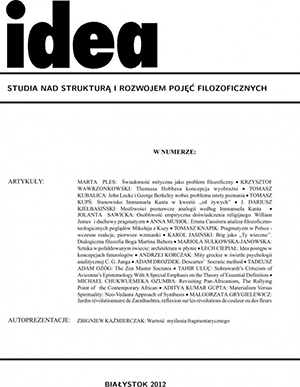“Superreal images for superreal people”. Black self-representation as self-invention in poetry and visual art of the black arts movement: the wall of respect
“Superreal images for superreal people”. Black self-representation as self-invention in poetry and visual art of the black arts movement: the wall of respect
Author(s): Jerzy KamionowskiSubject(s): Visual Arts, Aesthetics
Published by: Wydawnictwo Uniwersytetu w Białymstoku
Keywords: Black Aesthetic; black murals; Black Power; black self-representation; gaze; Gwendolyn Brooks; Haki Madhubuti; images of blacks; the Wall of Respect;
Summary/Abstract: The article entitled “'Superreal images for SUPERREAL People.' Black Self-Representation as Self-Invention in Poetry and Visual Art of the Black Arts Movement: The Wall of Respect” provides an analysis of the representation of African Americans by Black Arts Movement poets and visual artists involved in making the Wall of Respect, the most famous Black Power mural. Resisting, challenging and rejecting the controlling white gaze, through their verbal and visual acts of self-representation, they made an attempt to achieve a “better and truer self” for American blacks, which resulted in black myth-making and self-invention. That phenomenon is explored here through an examination of the history, legend and aesthetics of the mural, which is approached as a multimedia Poem of the People, whose interplay of various artistic forms of expression is aimed at liberation from the oppressiveness of white cultural hegemony, achieving “visibility,” and practicing “truly black” image-making. More specifically, special attention is given to its literary component – Amiri Baraka's poem “SOS,” which is embedded in the mural, and two poems entitled “The Wall,” written for that occasion by Haki Madhubuti and Gwendolyn Brooks, the latter poem read at the opening ceremony by its author. Detailed reading of the poems demonstrates how the written/spoken word assisted and enhanced visual black self-invention and projected-cum-generated a sense of togetherness and collective identification by creating an ultra-positive image of “new blacks,” and stigmatizing “negro toms” who stood for old-fashioned integrationism. Also, through condensed references to theories pertaining to the nature of image, visual representation and the power of the gaze (by Plato, Heidegger, Sartre and Lacan), put together with concepts of African American culture and expression (Houston Baker Jr.'s “the Black (W)hole” and Robert Stepto's “immersion”), philosophical aspects of the Black Arts Movement's artistic strategy of black self-invention as well as its limitations are explored.
Journal: Idea. Studia nad strukturą i rozwojem pojęć filozoficznych
- Issue Year: 2/2016
- Issue No: XXVIII
- Page Range: 210-232
- Page Count: 23
- Language: English

